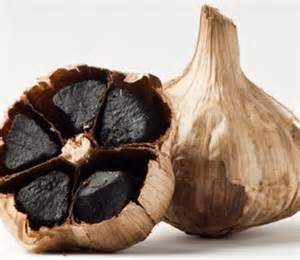Basic Principles of Food Fermentations
Basic Principles of Food Fermentation
• Introduction
• Fermentation and Fermenting Microorganisms
A)Food Fermentation
B)Fermented Foods: An ancient Tradition
C)Factors Influencing Fermentation
D)Biological Agents Responsible in Food
Fermentation
“fermentation, far from being a lifeless phenomenon, is a living process…”
– Louis Pasteur
The Chemistry of Fermentation
– Aerobic & Anaerobic Cellular Respiration
– Glycolysis
– Alcoholic Fermentation
– Lactic Acid Fermentation
Aerobic Cellular Respiration
• Aerobic means “with air”. This type of respiration needs oxygen for it to occur so it is called aerobic respiration.
Glucose + Oxygen -> Carbon dioxide + Water + Energy
• The chemical equation is:
C6H12O6 + 6O2 -> 6CO2 + 6H2O + 2900 kj
• 3 stages: -glycolysis
-citric acid cycle
-electron transport chain
Stages of Aerobic Cellular Respiration
• In glycolysis, a net of 2 molecules of ATP, or chemical energy, are produced.
• The citric acid cycle produces another 2 molecules of ATP
• The electron transport chain produces 28 molecules of ATP.
• Oxygen is used in aerobic cellular respiration as the final electron acceptor in the electron transport chain, which is part of why it’s able to create so much ATP. But what happens whenoxygen doesn’t exist?
Anaerobic Cellular Respiration
• In anaerobic cellular respiration, the only step of
this process that occurs is glycolysis.
What is fermentation?
• Derived from the Latin verb ‘fervere’ meaning ‘to boil’
What is fermentation?
• It is a process by which the living cell is able to obtain energy through the breakdown of glucose and other simple sugar molecules without requiring oxygen.
• Fermentation results in the production of energy in the form of two ATP molecules, and produces less energy than the aerobic process of cellular respiration .
• Louis Pasteur in the 19th century used the term fermentation in a narrow sense to describe the changes brought about by yeasts and other microorganisms growing in the absence of air (anaerobically);
• he also recognized that ethyl alcohol and carbon dioxide are not the only products of fermentation.
Definition
• Fermentation is the metabolic process in which carbohydrates and related compounds are oxidized with release of energy in the absence of external electron acceptors under anaerobic conditions.
Microbial cell (Biomass) Yeast
Microbial enzymes Glucose isomerase
Microbial metabolites Penicillin
Food products Cheese, yoghurt, vinegar
Vitamins B12, riboflavin
Products of Fermentation
Fermentation products include:
• Food products: from milk (yogurt, kefir, fresh and ripened cheeses), fruits (wine, vinegar), vegetables (pickles, sauerkraut, soy sauce), meat (fermented sausages, salami)
• Industrial chemicals: (solvents: acetone, butanol, ethanol, enzymes, amino acids)
• Specialty chemicals (vitamins, pharmaceuticals) Products of Fermentation
Most commercially useful fermentations may be classified as Solid state fermentation Submerged fermentation surface (solid state) submersion techniques.
• microorganisms cultivated on the surface of a liquid or solid substrate.
• complicated and rarely used in industry.
• Mushroom, bread, cocoa, tempeh
microorganisms grow in a liquid medium.
(biomass, protein, antibiotics, enzymes and sewage treatment) are carried out by submersion processes. 19
Some important fermentation products
Product Organism Use
Ethanol Saccharomyces
cerevisiae
Industrial solvents,
beverages
Glycerol Saccharomyces
cerevisiae
Production of
explosives
Lactic acid Lactobacillus
bulgaricus
Food and
pharmaceutical
Acetone and
butanol
Clostridium
acetobutylicum
Solvents
-amylase Bacillus subtilis Starch hydrolysis Fermentor is the basic equipment used for fermentation.
contains the media to carry out fermentation, and creates environment for fermentation at large scale.
Pure culture: organism, quantity, physiological state
Sterilised medium: for microorganism growth
Seed fermenter: inoculum to initiate process
Production fermenter: large model
Equipment
i) drawing the culture medium
ii) cell separation iii) collection of cell
iv) product purification v) effluent treatment.
II. Fermentation and Fermenting
Microorganisms
A)Food Fermentation
The food is metabolized as a result of anaerobic fermentation which produces a mixture of organic wastes including organic acids (e.g. Formic acid, propionic acid, acetic acid and lactic acids).Intrinsic and extrinsic factors are critical to fermentation process.
Table 2.1 Major types of fermentation
via pyruvate as a key compound
1. Lactic acid homofermentation
2. Lactic acid heterofermentation
3. Propionic acid fermentation
4. Diacetyl and 2,3-Butylene glycol fermentation
5. Alcoholic fermentation
6. Butyric acid fermentation
Lactic acid homofermentation
C6H12O6
2CH3CHOHCOOH
Glucose Lactic acid
Lactic Acid Heterofermentation
C6H12O6 + H2O
Glucose
2CH3CHOHCOOH+CH3COOH+C2H5OH+2CO2 +2H2
Lactic acid Acetic acid Ethanol
Propionic Acid Fermentation
C6H12O6 2CH3CHOHCOOH
Glucose Lactic acid
2CH3CH2COOH+CH3COOH
Propionic acid Acetic acid
Diacetyl and 2,3 Butylene Glycol
Fermentation
CH2COOHHOCOOH 2CH3COCOOH CH3COCHOHCH3+2CO2
Citric acid Pyruvic acid Acetylmethycarbinol
CH3COCOCH3
Diacetyl
CH3CHOHCHOHCH3
2,3 Butylene glycol
Alcoholic Fermentation
C6H12O6 2CH2H5OH +2CO2
Glucose Ethyl alcohol
Butyric Acid Fermentation
C6H12O6
CH3COOH+ CH3CH2CH2COOH
Lactic acid Acetic acid Butyric acid
Fermented Foods:An ancient Tradition
Human beings are known to have made fermented foods since Neolithic times. The earliest types were beer, wine, and leavened bread (made primarily by yeasts) and cheeses (made by bacteria and molds). These were soon followed by East Asian fermented foods, yogurt and other fermented milk products, pickles, sauerkraut, vinegar (soured wine), butter, and a host of traditional alcoholic beverages. More recently molds have been used in industrial fermentation to make vitamins B-2 (riboflavin) and B-12, textured protein products (from Fusarium and Rhizopus in Europe) antibiotics (such as penicillin), citric acid, and gluconic acid. Bacteria are now used to make the amino acids lysine and glutamic acid. Single-celled protein foods such as nutritional yeast and microalgae (spirulina, chlorella) are also made in modern industrial fermentations.
Fermentation is relatively efficient, low energy preservation process which increases the shelf life and decreases the need for refrigeration or other form of food preservation.
Factors Influencing Fermentation
• Temperature
• pH
• Nature and composition of medium
• Dissolved oxygen
• Dissolved carbon dioxide
• Operation system(batch,fed-batch,continuous)
• Feeding with precursors
• Mixing and shear rates in fermenter
Factors influencing fermentation may affect;
The rate of fermentation
The product spectrum and yield
The organoleptic properties of the product(appearance, taste, smell and texture)
The generation of toxins
Nutritional quality
Other physicochemical properties
Medium Formulation
The formulation of fermentation medium affects
The yield rate and product profile. The medium must provide the necessary amount of carbon,nitrogen ,trace elements and micronutrients(e.g. Vitamins for microorganisms)
Specific types of carbon and nitrogen sources may be required And carbon:nitrogen ratio may have to be controlled. Some trace elements may have to be avoided, for example minute amounts of iron reduce yields in citric acid production by A. niger.
Fermentation medium
• Define medium ; nutritional, hormonal, and substratum requirement of cells
• In most cases, the medium is independent of the bioreactor design and process parameters
• The type: complex and synthetic medium (mineral medium)
• Even small modifications in the medium could change cell line stability, product quality, yield, operational parameters, and downstream processing.
Medium composition
Fermentation medium consists of:
• Macronutrients (C, H, N, S, P, Mg sources water, sugars, lipid, amino acids, salt minerals)
• Micronutrients (trace elements/ metals, vitamins)
• Additional factors: growth factors, attachment proteins, transport proteins, etc) For aerobic culture, oxygen is sparged
End
…




